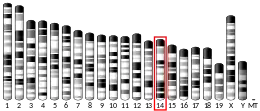| SLC18A3 | |||||||||||||||||||||||||||||||||||||||||||||||||||
|---|---|---|---|---|---|---|---|---|---|---|---|---|---|---|---|---|---|---|---|---|---|---|---|---|---|---|---|---|---|---|---|---|---|---|---|---|---|---|---|---|---|---|---|---|---|---|---|---|---|---|---|
| Identifiers | |||||||||||||||||||||||||||||||||||||||||||||||||||
| Aliases | SLC18A3, VACHT, solute carrier family 18 member A3, CMS21 | ||||||||||||||||||||||||||||||||||||||||||||||||||
| External IDs | OMIM: 600336 MGI: 1101061 HomoloGene: 11022 GeneCards: SLC18A3 | ||||||||||||||||||||||||||||||||||||||||||||||||||
| |||||||||||||||||||||||||||||||||||||||||||||||||||
| |||||||||||||||||||||||||||||||||||||||||||||||||||
| |||||||||||||||||||||||||||||||||||||||||||||||||||
| |||||||||||||||||||||||||||||||||||||||||||||||||||
| |||||||||||||||||||||||||||||||||||||||||||||||||||
| Wikidata | |||||||||||||||||||||||||||||||||||||||||||||||||||
| |||||||||||||||||||||||||||||||||||||||||||||||||||
The Vesicular acetylcholine transporter (VAChT) is a neurotransmitter transporter which is responsible for loading acetylcholine (ACh) into secretory organelles in neurons making acetylcholine available for secretion.[5][6] It is encoded by Solute carrier family 18, member 3 (SLC18A3) gene, located within the first intron of the choline acetyltransferase gene. VAChT is able to transport ACh into vesicles by relying on an exchange between protons (H+) that were previously pumped into the vesicle diffusing out, thus acting as an antiporter. ACh molecules are then carried into the vesicle by the action of exiting protons.[7] Acetylcholine transport utilizes a proton gradient established by a vacuolar ATPase.
VAChT uptake inhibitors
Radiolabeled compounds
PET imaging of the VAChT may provide insights into early diagnosis of Alzheimer's disease.
References
- 1 2 3 GRCh38: Ensembl release 89: ENSG00000187714 - Ensembl, May 2017
- 1 2 3 GRCm38: Ensembl release 89: ENSMUSG00000100241 - Ensembl, May 2017
- ↑ "Human PubMed Reference:". National Center for Biotechnology Information, U.S. National Library of Medicine.
- ↑ "Mouse PubMed Reference:". National Center for Biotechnology Information, U.S. National Library of Medicine.
- ↑ Erickson JD, Varoqui H (Dec 2000). "Molecular analysis of vesicular amine transporter function and targeting to secretory organelles". FASEB Journal. 14 (15): 2450–8. doi:10.1096/fj.00-0206rev. PMID 11099462. S2CID 15305436.
- ↑ Weihe E, Tao-Cheng JH, Schäfer MK, Erickson JD, Eiden LE (Apr 1996). "Visualization of the vesicular acetylcholine transporter in cholinergic nerve terminals and its targeting to a specific population of small synaptic vesicles". Proceedings of the National Academy of Sciences of the United States of America. 93 (8): 3547–52. doi:10.1073/pnas.93.8.3547. PMC 39647. PMID 8622973.
- ↑ Waymire J. "Storage of ACh". University of Texas Medical Center.
- ↑ Tu Z, Efange SM, Xu J, Li S, Jones LA, Parsons SM, Mach RH (Mar 2009). "Synthesis and in vitro and in vivo evaluation of 18F-labeled positron emission tomography (PET) ligands for imaging the vesicular acetylcholine transporter". Journal of Medicinal Chemistry. 52 (5): 1358–69. doi:10.1021/jm8012344. PMC 2765529. PMID 19203271.
Further reading
- Matsuo A, Bellier JP, Nishimura M, Yasuhara O, Saito N, Kimura H (Feb 2011). "Nuclear choline acetyltransferase activates transcription of a high-affinity choline transporter". The Journal of Biological Chemistry. 286 (7): 5836–45. doi:10.1074/jbc.M110.147611. PMC 3037696. PMID 21163949.
- Lau JK, Brown KC, Thornhill BA, Crabtree CM, Dom AM, Witte TR, Hardman WE, McNees CA, Stover CA, Carpenter AB, Luo H, Chen YC, Shiflett BS, Dasgupta P (Feb 2013). "Inhibition of cholinergic signaling causes apoptosis in human bronchioalveolar carcinoma". Cancer Research. 73 (4): 1328–39. doi:10.1158/0008-5472.CAN-12-3190. PMC 10461321. PMID 23222296.
- Varoqui H, Erickson JD (Nov 1996). "Active transport of acetylcholine by the human vesicular acetylcholine transporter". The Journal of Biological Chemistry. 271 (44): 27229–32. doi:10.1074/jbc.271.44.27229. PMID 8910293.
- Harold D, Peirce T, Moskvina V, Myers A, Jones S, Hollingworth P, Moore P, Lovestone S, Powell J, Foy C, Archer N, Walter S, Edmonson A, McIlroy S, Craig D, Passmore PA, Goate A, Hardy J, O'Donovan M, Williams J, Liddell M, Owen MJ, Jones L (Aug 2003). "Sequence variation in the CHAT locus shows no association with late-onset Alzheimer's disease". Human Genetics. 113 (3): 258–67. doi:10.1007/s00439-003-0960-2. PMID 12759818. S2CID 24977017.
- Morgan AR, Turic D, Jehu L, Hamilton G, Hollingworth P, Moskvina V, Jones L, Lovestone S, Brayne C, Rubinsztein DC, Lawlor B, Gill M, O'Donovan MC, Owen MJ, Williams J (Sep 2007). "Association studies of 23 positional/functional candidate genes on chromosome 10 in late-onset Alzheimer's disease". American Journal of Medical Genetics Part B. 144B (6): 762–70. doi:10.1002/ajmg.b.30509. PMID 17373700. S2CID 26081707.
- Schütz B, Chen L, Schäfer MK, Weihe E, Eiden LE (2000). "Somatomotor neuron-specific expression of the human cholinergic gene locus in transgenic mice". Neuroscience. 96 (4): 707–22. doi:10.1016/s0306-4522(99)00587-4. PMID 10727789. S2CID 44276305.
- Khare P, Mulakaluri A, Parsons SM (Nov 2010). "Search for the acetylcholine and vesamicol binding sites in vesicular acetylcholine transporter: the region around the lumenal end of the transport channel". Journal of Neurochemistry. 115 (4): 984–93. doi:10.1111/j.1471-4159.2010.06990.x. PMC 2962730. PMID 20831599.
- Tayebati SK, El-Assouad D, Ricci A, Amenta F (Nov 2002). "Immunochemical and immunocytochemical characterization of cholinergic markers in human peripheral blood lymphocytes". Journal of Neuroimmunology. 132 (1–2): 147–55. doi:10.1016/s0165-5728(02)00325-9. PMID 12417445. S2CID 20921312.
- Chireux MA, Le Van Thai A, Weber MJ (Mar 1995). "Human choline acetyltransferase gene: localization of alternative first exons". Journal of Neuroscience Research. 40 (4): 427–38. doi:10.1002/jnr.490400402. PMID 7616604. S2CID 42856768.
External links
- Vesicular+Acetylcholine+Transporter at the U.S. National Library of Medicine Medical Subject Headings (MeSH)



